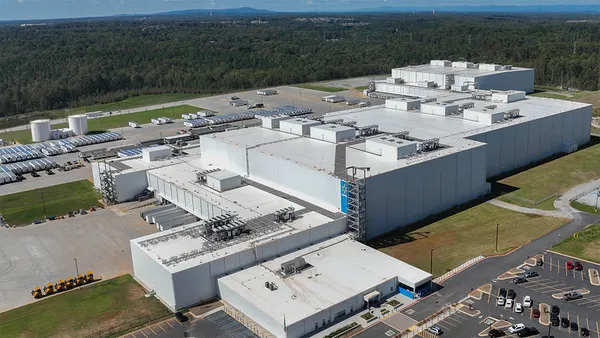Consider this conundrum: a well respected consumer goods manufacturer gets a call from a key retailer asking to return two years’ worth of inventory for a particular SKU. Two years. Why? Perhaps neither the manufacturer nor the retailer had visibility as to how much product was sitting in their DCs and stores. Or maybe the product was moving more slowly than anticipated and no one was signaled of this underperformance. Regardless of the reason, the retailer ended up with more product and inventory than they could sell and now this item was being discontinued.
You can image the manufacturer’s surprise and discomfort upon receiving that phone call. The retailer couldn't have been very pleased either. Not only did the manufacturer have to re-absorb finished product, the opportunity cost was also high for the retailer, as they could have been selling a more productive item.
What it Means to Have Complete Visibility
The value of full visibility into your business operations cannot be overstated, particularly in supply chain operations. In the world of retail, many long-standing practices exist to track inventory, shipments, service levels, out-of-stocks, and overstocks. However, companies still struggle to effectively use the data they have, leading to situations like in the above example. In fact, this type of problem happens frequently across large and small companies alike. So, how do you prevent this and similar inventory-related supply chain issues? It starts with the right view of data.
Having visibility into days of supply across all your items is important, but retail supply chain professionals should also ask themselves: do I have visibility of days of supply by DC and by store? What about by planogram? When a new item is introduced, for example, or an existing item is about to be discontinued, it makes a big difference to the success of that item’s transition if you know how much you have – and how much you need – by DC as well as by planogram. With warehouse and store-level inventory information by item, you can proactively plan ahead and facilitate smooth transitions for store operations, sales teams, merchandisers, and suppliers.
Another critical area to monitor is product velocity or turns. We opened this article with an example of an overstock problem. Usually it’s the out-of-stocks that get the most attention. But without visibility into how quickly a product sells through, overstocks can suddenly become an issue that not only puts your margin and bottom line at risk, but can also tie up space in your network and strain supplier relationships.
The key to an informed and responsive supply chain is to proactively monitor supply chain data in a holistic manner, which means tracking metrics such as days of supply and velocity in conjunction with less frequent variables such as planogram updates, discontinuations, or new category entrants. With a detailed, easy-to-use report that captures your supply chain operations in a more complete way, you can effectively manage inventory by warehouse, division, or store.
A Three-Step Approach to Achieving a Holistic View
Taking the necessary steps toward improving the visibility of your supply chain organization can be daunting. This is where laying out a plan is useful. With three steps, just about any retail supply chain operation can significantly improve business visibility and management. First, you need the right tools and reports. It doesn’t matter how much data you’re sitting on if you’re unable to capture and organize it in a way that allows you to customize, view, and take action against relevant metrics in a meaningful way.
Second, the right data needs to be captured. Retailers and manufacturers each have their own data, but manufacturers don’t necessarily have complete visibility of what occurs after product is shipped to the retailer. The best solutions we have seen involve retailer and supplier collaboration through data sharing. Retailers can share granular supply chain and sales data with manufacturers, generating a “single version of the truth.” This consistent, single view is beneficial for both the retailer and supplier.
Finally, the third step is to gain commitment from supply chain management, and any other functions that use the data, to take action toward making data more visible and more accessible. Without this commitment, the data and reports on their own will have limited impact. Making the conscious decision to improve a supply chain team’s access to data means making a commitment to improving their analytical capabilities.
By taking these three steps, you can transform the responsiveness of your organization’s supply chain, unlock new growth-driving opportunities, and plan for the future. 1010data’s flexible platform provides the type of customization and standardization of supply chain reporting and analytics required for this type of initiative. With significant experience implementing retail supply chain analytical solutions and data sharing models between retailers and manufacturers, 1010data can help retailers increase supply chain visibility in order to optimize operations and planning.
To learn more about how 1010data can help supply chain organizations elevate their data analytics, check out our deep dive on this topic, Spotlight on Supply Chain Increase visibility and Drive Greater Profitability









